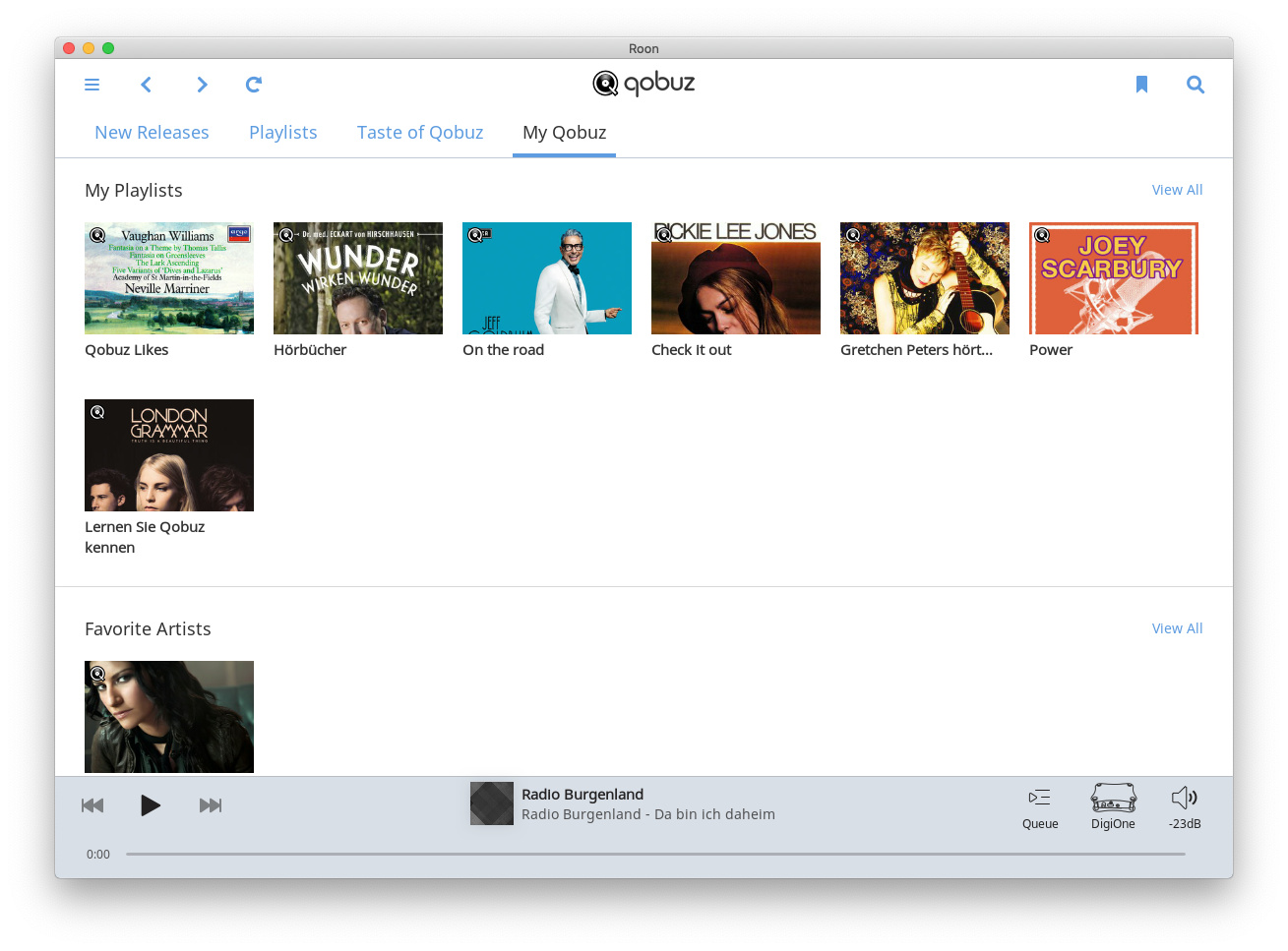
Qobuz web player full#
The Tidal webplayer is scalable, that is it works whatever the width of your browser window, Qobuz however is a fixed width with a slider at the bottom if your browser is set too small, it virtually takes up the whole screen when given full rein. Thus before the list of Zappa releases is finished you get Deep Purple’s Machine Head, Esperanza Spalding’s Emily’s D Evolution and Riccardo Fassi Tank Band Plays The Music of Frank Zappa and Italian pianist Stefano Bollani’s Sheik Yer Zappa, there’s even a Matt Berry (Toast of London) album there. Tidal puts the albums in reverse chronological order, most recent at the top, whereas Qobuz is pretty random, and neither does it stop at Zappa albums but continues with releases of a vaguely similar style. Tidal and Qobuz have distinct webplayer platforms and present information in different ways, I searched for the albums of Frank Zappa for instance and got the following two displays. The other bonus for those looking for maximum sound quality is that Qobuz sells downloads of high res material and discounts its prices for Sublime+ customers, Tidal is purely a streaming platform. Qobuz’s premium service Sublime+ offers material at up to 24/96 without MQA decoding, again you need to use the desktop app on a PC, or audio hardware to access it.

Qobuz web player Pc#
On the PC you need Tidal’s desktop app in order to play Masters resolution files, all hardware based systems include it as part of the package.
Qobuz web player series#
The bit/sample rate of lossless streaming offered by both is CD standard 16-bit/44.1kHz but both have high res options, Tidal uses MQA to encode its Masters series releases which are generally 24-bit and either 44.1 or 48kHz but go up to 192 with some material. Comparing the two with an Innuos Zenith SE server as source and CAD 1543 MkII DAC there was very little difference at all, both sound pretty good if not in the same league as material stored on the server itself. Sound quality wise Tidal is the more neutral of the two on the webplayer while Qobuz has a juicier sound with fuller bass, at least this was the case with Esperanza Spalding’s ‘Judas’. Using both services via their webplayer platforms there are some surprising differences in what you hear, Qobuz is distinctly louder than Tidal, which suggests some kind of compression is being used, its streams also suffered from drop out whereas the Tidal site can be slow to load new pages but delivers a smooth stream.
Qobuz web player Bluetooth#
Unlike Bluetooth or Airplay it can send bit/sample rates up to 24/96, and Google’s own receiver can be purchased for the princely sum of £30 and has digial and analogue outputs, so it can be used with any amplifier or DAC.

There aren’t many more but there is Sonos which while not strictly hi-fi is the leader in network streaming, so somebody must be using it! One answer that Qobuz has to this dilemma is Google Chromecast, the Qobuz app can stream over Chromecast and a growing number of audio components have receivers for this relatively hi-res wireless protocol. Pretty well all the hi-fi companies that make streamers offer Tidal, only a small proportion have Qobuz onboard, among them are Auralic, Bluesound, Yamaha, Cabasse, Electrocompaniet, Linn and Sony. Thus far Qobuz is available in 11 European countries.īoth services have web and mobile apps for maximum market penetration but when it comes to audio hardware brands Tidal has considerably greater presence. Especially if your tastes include classical music, which has a high profile on the service. Their catholic tastes mean a broader musical remit, if your ears enjoy musical forms beyond the chart topping it is more likely to show you something that might be of interest. Qobuz is French, so it waits until Friday to upload the latest albums from the preceding seven days.


 0 kommentar(er)
0 kommentar(er)
